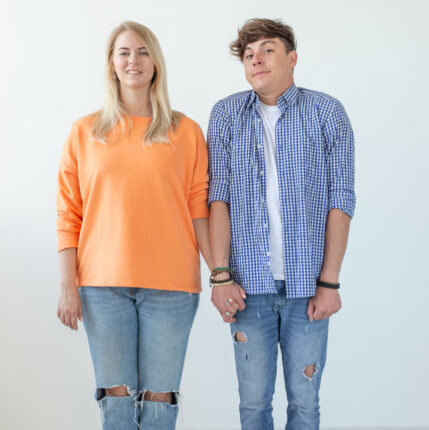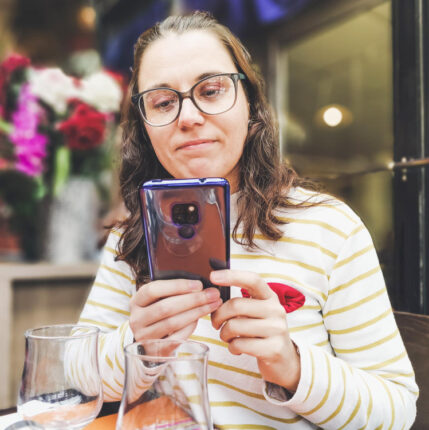
When it comes to romantic attraction and finding our match, we all have our preferences, ranging from height to hair colour and from career to relationship history. But these dating preferences can shrink our dating pool, and they may keep us single. Is it time to broaden our dating horizons?
We can’t force ourselves to be attracted to people we’re not. That’s not the path to a sustainable relationship, and it’s not what I’m suggesting here. But it’s worth exploring whether our dating preferences are prejudices, whether they are stopping us from meeting potential mates and how we can become more open to people who aren’t our usual type.
 Let’s take height as an example. I know from speaking to many people who are looking for love that women tend to want their partner to be taller than them, while shorter men often get overlooked on dating sites and apps or ruled out after a meet-up.
Let’s take height as an example. I know from speaking to many people who are looking for love that women tend to want their partner to be taller than them, while shorter men often get overlooked on dating sites and apps or ruled out after a meet-up.
From my own experience, I know that we often assign meaning to certain physical attributes. Fairy tales and Hollywood movies have trained women to find tall men attractive and to equate height and broad shoulders with masculinity and strength. The same goes for the opposite sex—women in fairy tales tend to have a particular body shape and luscious, long locks.
Thankfully, popular culture is shaking things up, championing diversity and challenging what’s traditionally been viewed as attractive. Still, many of us made up our minds long ago, and our preferences and prejudices can be difficult to shift.
The problem with waiting for someone who looks a certain way or has a specific background to cross our path is that we may be waiting for a long time. We may overlook the wonderful people in front of us because they’re not tall, short, broad, slim, or curvaceous enough, have the ‘wrong’ hair colour, have been married before, or have kids.
I have my own relevant anecdote about dating preferences.
When I met my now husband, I can’t deny that I was attracted to his height and broad shoulders. On the other hand, I was put off by his teeth, which weren’t straight, and by his long hair, which he wore in a ponytail (he was 45). I also judged him on his career, the old car he drove (which I later learned had belonged to his late father), his level of education, and his ability to spell.
If I’d listened to this judgemental voice, I wouldn’t be in a wonderful marriage with a man I adore. I’d still be waiting for someone with straighter teeth, shorter hair, a high-flying career and a fancy car.
As I ponder my past dating preferences, I’m struck by the fact that they are more about me than the other person.
If he were tall and broad, I would feel petite, feminine and safe in his presence (this was very alluring to me – I used to have a binge eating disorder, be overweight and feel too big. I also grew up in a dysfunctional home feeling unsafe).
If he was a high-achiever with white teeth and a shiny car, his success and looks would reflect positively on me. People would think I’d landed a ‘catch’ and I’d feel better about myself (ideal for someone who’d always struggled with low self-esteem and not feeling enough).
So, how do we stop our prejudices from thwarting our chances of finding love, and how do we broaden our search, even just a little bit?
I have three suggestions:
Try to give yourself what you are seeking from your date or partner
 If you can accept and love yourself as you are, cherish your body as it is and bolster your self-esteem so that you feel enough, irrespective of who’s by your side, it won’t matter so much what your date or partner looks like – you won’t need them to help you to feel better about yourself.
If you can accept and love yourself as you are, cherish your body as it is and bolster your self-esteem so that you feel enough, irrespective of who’s by your side, it won’t matter so much what your date or partner looks like – you won’t need them to help you to feel better about yourself.
If you aspire to feel more feminine or masculine, try to create that feeling for yourself and let your date or partner off the hook. And if you don’t feel safe, try to create a sense of safety within yourself, with God’s help, rather than depending on others to provide this for you.
The more you do these things – the more you take care of your own needs – the less you will need your partner to do this for you, and the more open you will be to different types.
Look beneath the surface
My second suggestion is to look beneath the superficial stuff, to see beyond the height or the width or the curves or the hair colour or the past relationship history (unless this throws up some red flags) and look within. See the person’s qualities and values – their kindness, generosity, sensitivity, and warmth. See what God sees.
Experiment with meeting different ‘types’
Challenge yourself to change your settings on your dating profile. Search to meet people of different ages, heights, professions, hobbies and past relationship scenarios. Broaden your dating pool. See this as an experiment. You don’t have to date the person again if it doesn’t feel right. Simply go along. Be curious. Look beneath the surface as above. Explore their values and who they are at their core.
At worst, you’ll gain more dating practice, which is hugely valuable. You’ll get better at setting boundaries, saying yes, saying no, and understanding whether your preferences are prejudices or whether they are preferences that are important to you.
At best, you’ll surprise yourself and be drawn to people you never would have imagined dating in the past.
Do you have dating preferences? Could it be time to expand your dating pool?
Read more about expanding your dating preferences and ‘type’ on the Christian Connection blog: ‘I was wondering… about playing against type‘ and ‘How to find a date who shares your values.’
Get weekly blog articles direct to your email inbox





